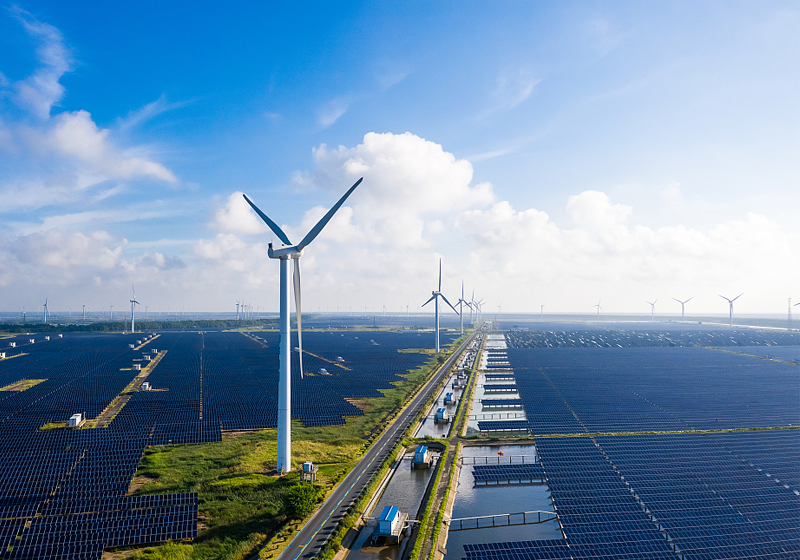Email format error
Email cannot be empty
Email already exists
6-20 characters(letters plus numbers only)
The password is inconsistent
Email format error
Email cannot be empty
Email does not exist
6-20 characters(letters plus numbers only)
The password is inconsistent


Understanding Low Wind Speed: What It Means and Why It Matters
Wind speed is a fundamental aspect of weather that impacts various facets of our daily lives, from the activities we choose to the safety measures we take. But what exactly is considered low wind speed, and how does it influence different aspects of our environment? This blog post aims to explore the concept of low wind speed, its significance, and the factors that determine what is classified as low wind speed.
What is Considered Low Wind Speed?
To start, let’s define what is meant by low wind speed. Wind speed is measured in units such as miles per hour (mph), kilometers per hour (km/h), or meters per second (m/s). The threshold for low wind speed can vary depending on the context and the region, but generally, it refers to wind speeds that are on the lower end of the scale.
In meteorological terms, wind speeds below 5 mph (8 km/h) are often considered low. This is the threshold where the wind is barely noticeable and has minimal impact on daily activities. For comparison, a gentle breeze is usually defined as wind speeds between 5 to 15 mph (8 to 24 km/h), which is still relatively mild but more noticeable than what is classified as low wind speed.
Why Low Wind Speed Matters
1. Weather Forecasting
Low wind speed can have a significant impact on weather forecasting and predictions. When wind speeds are low, it often indicates that the atmosphere is relatively stable. This can mean that weather patterns are less likely to change rapidly. However, it can also be a sign of stagnant air, which may lead to the accumulation of pollutants and a higher likelihood of fog or smog.
Meteorologists use wind speed data to predict weather conditions and make forecasts. Understanding low wind speeds helps them provide more accurate predictions for calm days or periods of stillness in the atmosphere.
2. Aviation and Transportation
For aviation, low wind speeds can be both a blessing and a challenge. On the one hand, low wind speeds make for smoother and easier takeoffs and landings. Pilots prefer low winds as it reduces the risk of turbulence and makes handling the aircraft easier.
On the other hand, low wind speeds can also impact flight schedules. Aircraft rely on wind for efficiency, and very low winds can mean longer travel times and increased fuel consumption. Pilots and air traffic controllers must carefully consider wind conditions to ensure safe and efficient operations.
In maritime transportation, low wind speeds can influence sailing conditions. Sailboats, in particular, require adequate wind to sail efficiently. Low wind speeds can result in slower travel times and require adjustments to navigation plans.

3. Renewable Energy
Wind energy is a crucial part of the renewable energy sector. Wind turbines rely on adequate wind speeds to generate electricity. Typically, wind turbines require wind speeds of at least 6 to 9 mph (10 to 15 km/h) to start generating power. When wind speeds drop below this threshold, turbines may not operate efficiently, leading to reduced energy output.
Low wind speed periods can impact the reliability of wind power and necessitate the use of alternative energy sources or storage solutions to maintain a steady supply of electricity. Engineers and energy planners must account for these variations in wind speed when designing and operating wind farms.
4. Outdoor Activities
Low wind speeds can make outdoor activities more enjoyable. For instance, low wind speeds create ideal conditions for outdoor events, picnics, and recreational sports like sailing, kite flying, and paragliding. People often seek out calm, windless days for these activities to avoid the disruptions caused by strong winds.
Conversely, some outdoor activities may be negatively affected by low wind speeds. For example, windsurfing and other wind-dependent sports require adequate wind to be enjoyable and feasible. Low winds can limit opportunities for enthusiasts and affect event planning.
Factors Influencing Low Wind Speed
Several factors can contribute to low wind speeds, including:
Geographic Location: Coastal areas and open plains generally experience higher wind speeds due to the lack of natural barriers. In contrast, mountainous regions or areas surrounded by dense vegetation may experience more sheltered conditions with lower wind speeds.
Weather Systems: High-pressure systems often bring calm and stable conditions, leading to lower wind speeds. In contrast, low-pressure systems and storm fronts typically produce stronger winds.
Time of Day and Year: Wind speeds can vary throughout the day and across seasons. Early mornings and late evenings often have lower wind speeds, while mid-afternoons can experience higher winds due to temperature differentials.
Topography: Local topography can greatly influence wind patterns. Valleys and depressions can trap air, leading to lower wind speeds, while open areas and ridges can allow for more consistent airflow.
Conclusion
Understanding what is considered low wind speed and its implications helps us appreciate the subtle yet significant role that wind plays in our environment. From weather forecasting and aviation to renewable energy and outdoor activities, low wind speeds have a wide range of effects on our lives. By recognizing the factors that influence wind speed and its impact, we can better prepare for and adapt to varying conditions, whether we’re planning a sailing trip, designing a wind farm, or simply enjoying a calm day outside.
As we continue to study and monitor wind patterns, we gain valuable insights that can improve our daily lives and contribute to a more sustainable future. So the next time you find yourself on a breezy or still day, you’ll have a better understanding of the forces at play and how they shape our world.

